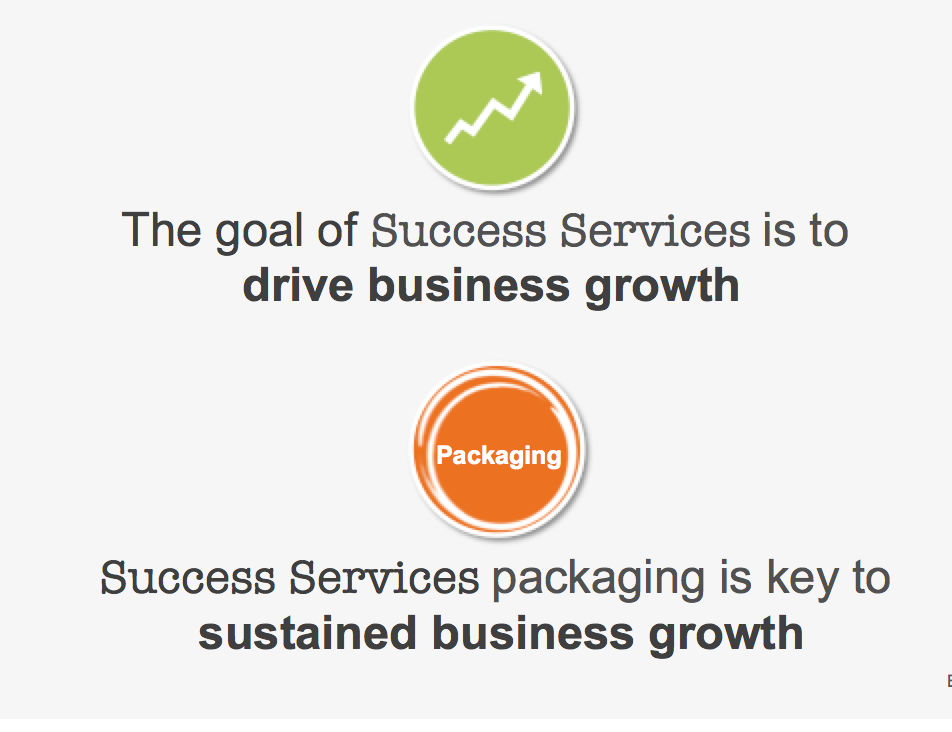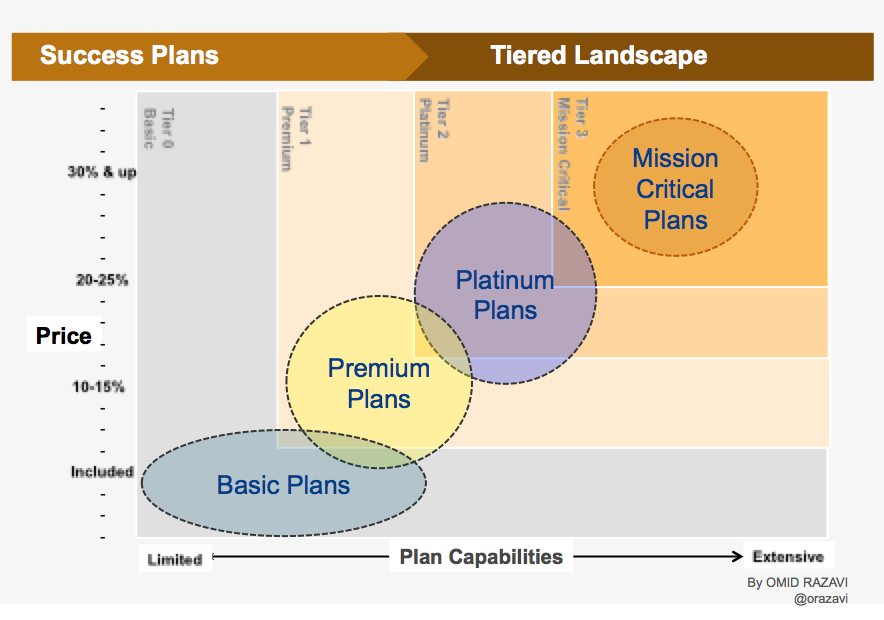The reality of today’s subscription business demands that technology providers have the right people, processes and services in place not only for supporting their customers but also for ensuring that customers are successful with their products. In the not-so-distant past, the majority of XaaS providers did not understand well the link between the service they provide and the future health of their companies. Now they are starting to realize that a whole set of new offerings and range of service and support options are needed to improve the customer journey, increase customer loyalty and consequently reduce churn.
Some companies are replacing, and sometimes retiring, their legacy services that belonged to a different era of vendor/supplier relationships and are creating new innovative service offerings to deliver customer results and increased profits as well as to distinguish themselves from competitors.

The traditional services model with clear dividing lines between the organizations for consulting, support, training, account management, etc. each focused on internal competencies instead of the customers’ business, working within their operational silos and occasionally competing with one another.
This traditional model is increasingly failing to both deliver customer results and to achieve its own financial objectives.
The real opportunity is not necessarily in converging services into one organization and under a single leader, but in reorganizing and realigning services to customer journey needs. For some companies, this will require breaking the services organization silos to mix and match different capabilities and define the core processes and responsibilities that support an ideal customer journey.
It is all about refocusing on external orientation and reskilling for competencies relevant to the business of the customer. There is also the opportunity to define new subscription and project-based monetized offerings through co-innovation with customers.
These offerings will be your services “product” life cycle, managed by services “product managers” and updated periodically for the customer value and revenue and profit they bring.
In XaaS, where everything is offered as a service, service becomes a product. This is the natural next step in the evolution of the traditional services model. Services products are developed and packaged for customer experience and success in terms of user adoption, technology consumption and business value realization. This approach to service development shows customers that you understand their challenges in delivering their solution, and that you are there with them to achieve their business outcome.
Rolling out these outcome-focused and differentiating services allows you to increase service signups from your current customer base and maximize the value of your customer relationships over the long term.
7 essential success services capabilities
To enable the delivery of success services you need to create the right mindset in your company, and more importantly, you need to develop the following specific capabilities.
- Measure adoption. Set up a framework to measure, understand and assess customer adoption rates by roles and functions in the organization.
- Monitor consumption. Develop a framework of usage and business Key Performance Indicators (KPIs) to effectively measure performance (monitoring/scoring/benchmarking and dashboarding). This process will help you identify areas that need improvement.
- Leverage customer analytics. Develop expertise to monitor interactions with customers and to collect and analyze customer usage data to predict potential renewal or cancellation/churn. Use the insights to scale service offerings to drive up user adoption levels.
- Expand sales. Develop a strategy to expand your product footprint within your installed customer base with cross-sells and upsells (adding additional seats, new modules, or complementary offerings).
- Develop outcome-focused services. Develop service offerings that are designed to enable and support the realization of specific customer outcomes.
- Segment customers. Define your customer segmentation strategy and process to identify the most appropriate services for each customer. Typical criteria for segmentation are related to the size and degree of the strategic-ness of the account, such as annual contract value (ACV), potential ACV, certain industries, etc.
- Ensure customer success delivery. Make sure your customers are successfully adopting your technology to achieve their business objectives. Activities here involve periodic (quarterly/annual) and ad hoc account reviews, feature deployment and utilization assistance, best practices playbooks, webinars and workshops.

The capabilities listed above can serve as a baseline against which to measure your company’s current ability and organizational readiness to deliver success services. Many organizations will need to develop new capabilities to grow beyond, and even replace their existing services, to enable the delivery of success service offerings.
Organizations that successfully align their charter, processes, roles and skills to drive customer outcomes throughout the customer journey will achieve profitable and long-lasting growth in the pay-as-you go economy.
In my next article, I’ll dive deeper into the best practices for success services design and delivery.
Omid Razavi is a cloud sales and customer success leader and currently advisor to software and technology companies to grow and/or transform their sales, services and operations for the cloud. Dr. Razavi has over 20 years of leadership experience in managing sales and services at various companies in Silicon Valley. He may be reached at LinkedIn and Twitter.
